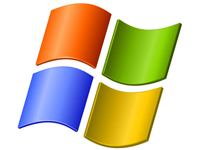
Said to be simple and easy to understand, the newly signed variation to the Microsoft Schools Agreement has removed traditional barriers to software licensing and is designed to provide schools with significant value for money.
Education manager at Microsoft New Zealand, Evan Blackman, says the EES agreement represents a further step in providing all New Zealand schools with access to top-of-the-line technology solutions.
“Our main priority is the students coming through the schooling system today. They will grow up to be tomorrow’s leaders, and to ensure the economic and future success of New Zealand we need to make sure our students are digitally literate and operating at the highest level they can be.
“The EES agreement provides schools with unlimited servers, as well as the option of moving to a private cloud. Combined with the Ultra-Fast Broadband (UFB) rollout which will provide schools with high speed connectivity, this change to the Microsoft Schools Agreement means cloud services will be more accessible, giving schools more technology flexibility and ultimately lifting school and student performance,” he said.
The Microsoft New Zealand School Agreement has been in place since 2009. The EES agreement (negotiated and confirmed this year) will enable greater use and deployment of technology into schools.
Mike Leach, principal at Botany Downs Secondary College says this agreement will give schools access to technology that was not previously feasible.
“By significantly reducing the cost of implementing and managing technology solutions, the EES agreement is allowing schools to redistribute resources and funds within existing budgets to other areas where it is desperately needed.”
The much-delayed English draft curriculum is now out for consultation, generating discussion from teachers.
Research from AUT demonstrates arts, culture and recreation have positive impacts on all aspects of…
How effective has the school phone ban been in achieving its aims? Researchers from the…
School camps and excursions deliver hands on learning experiences, helping to consolidate classroom learning.
Innovations in AV technologies present new opportunities to engage with students. We look at how…
A new report from the University of Auckland’s Our Voices Project asks young people what…
This website uses cookies.